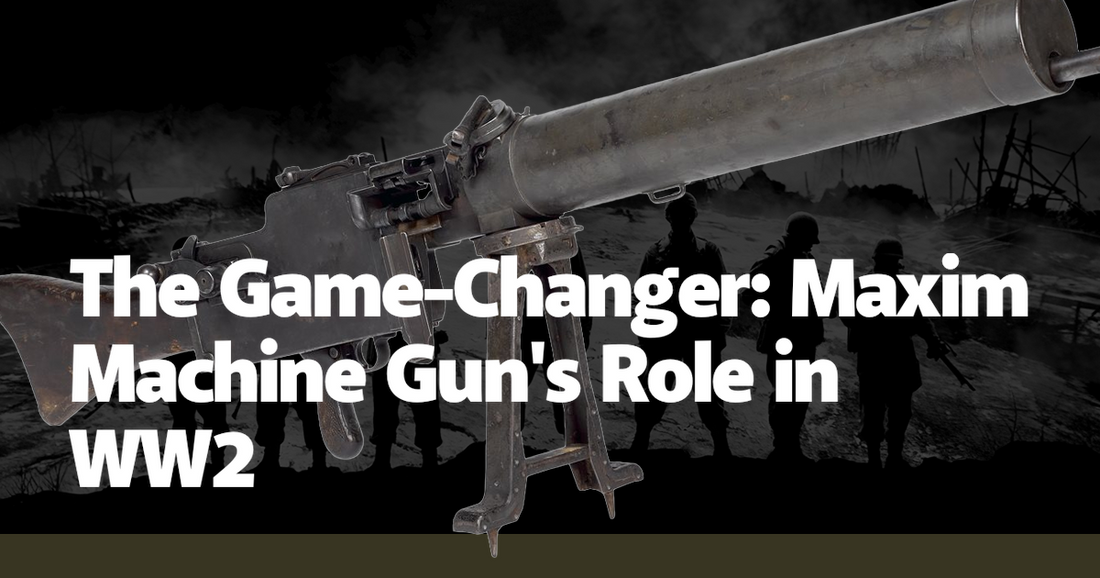The Maxim machine gun, an invention of the late 19th century, emerged as a pivotal force during World War II, fundamentally altering the dynamics of battlefield engagements. Its significance cannot be overstated, as it brought about a paradigm shift in military strategy and tactics. Developed by Hiram Maxim in 1884, this formidable weapon utilized the energy of the recoil to automatically reload, allowing for a continuous stream of bullets with minimal manual intervention. By the time World War II erupted, the Maxim had evolved and been adopted by numerous armies worldwide, including the British, Germans, and Soviets. Its presence on the battlefield was ubiquitous, and its impact, profound.
During the early stages of World War II, the Maxim machine gun was particularly instrumental in the Soviet defense against the German Blitzkrieg. The Germans, equipped with their advanced Panzer divisions, sought to overwhelm Soviet defenses with speed and firepower. However, the Soviets, armed with the Maxim M1910, managed to create formidable defensive positions. The Maxim’s ability to sustain a high rate of fire made it ideal for repelling waves of infantry and providing suppressive fire, significantly slowing down the German advance. Anecdotes from the Battle of Moscow recount how Soviet machine gunners, entrenched and resolute, utilized the Maxim to devastating effect, decimating German infantry and buying crucial time for reinforcements.
In the Pacific Theater, the Maxim machine gun also played a critical role, particularly in the hands of Chinese forces resisting Japanese aggression. The Chinese Nationalist Army, though often outgunned and outmaneuvered, relied heavily on the Maxim to level the playing field. The gun’s reliability in harsh conditions proved invaluable in the rugged terrain of China. Stories from the Battle of Changsha illustrate how Chinese soldiers, equipped with the Maxim, held their ground against relentless Japanese assaults. The gun’s sustained fire capability allowed small defensive units to punch above their weight, inflicting heavy casualties on the attacking forces and stalling their advance.
The German Wehrmacht, recognizing the Maxim’s effectiveness, also integrated captured versions into their arsenal. This adaptability underscores the gun’s versatility and the respect it commanded across various military doctrines. German engineers even made modifications to enhance its performance, leading to the development of the MG34 and later the MG42, which drew heavily on the Maxim’s design principles. These innovations further cemented the Maxim’s legacy, as its underlying technology continued to influence machine gun development throughout the war.
Despite its formidable reputation, the Maxim machine gun was not without its challenges. Its weight and bulkiness made it less mobile compared to newer, lighter machine guns. This limitation required strategic placement and often confined its use to defensive roles rather than offensive maneuvers. However, when properly deployed, the Maxim’s firepower was unmatched. The Battle of Stalingrad provides a stark illustration of this, where Soviet forces, entrenched in the city’s ruins, used the Maxim to create deadly kill zones, decimating German infantry attempting to advance through the urban landscape.
The psychological impact of the Maxim machine gun on both friend and foe was profound. Its distinctive, relentless chatter became synonymous with death and destruction. Soldiers on the receiving end of its firepower often described the experience as terrifying, a sentiment echoed in countless war memoirs. Conversely, those operating the Maxim found a sense of empowerment, knowing they wielded a weapon capable of turning the tide of battle. This duality of fear and power encapsulates the Maxim’s role in World War II, as both a tool of destruction and a symbol of resistance.
As the war progressed, technological advancements led to the development of more sophisticated and portable machine guns. However, the Maxim’s legacy endured, its design principles influencing future generations of automatic weapons. The gun's impact extended beyond the battlefield, shaping military doctrine and training programs for years to come. Its role in World War II serves as a testament to the transformative power of innovation in warfare, highlighting how a single invention can alter the course of history.
In retrospect, the Maxim machine gun stands as a game-changer in World War II, its influence felt across various theaters of war and among different armies. Its ability to deliver sustained, devastating firepower made it a cornerstone of defensive strategies and a formidable obstacle for attacking forces. The stories and anecdotes from battles where the Maxim played a crucial role provide a vivid illustration of its impact. As military historians and enthusiasts reflect on World War II, the Maxim machine gun remains an enduring symbol of the era, a testament to the ingenuity and resilience of those who wielded it.

